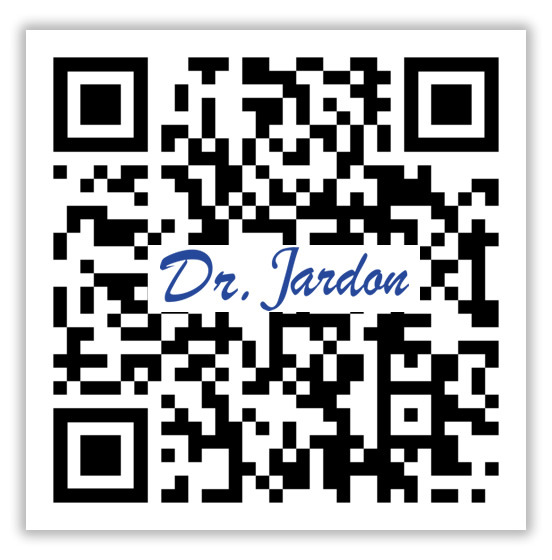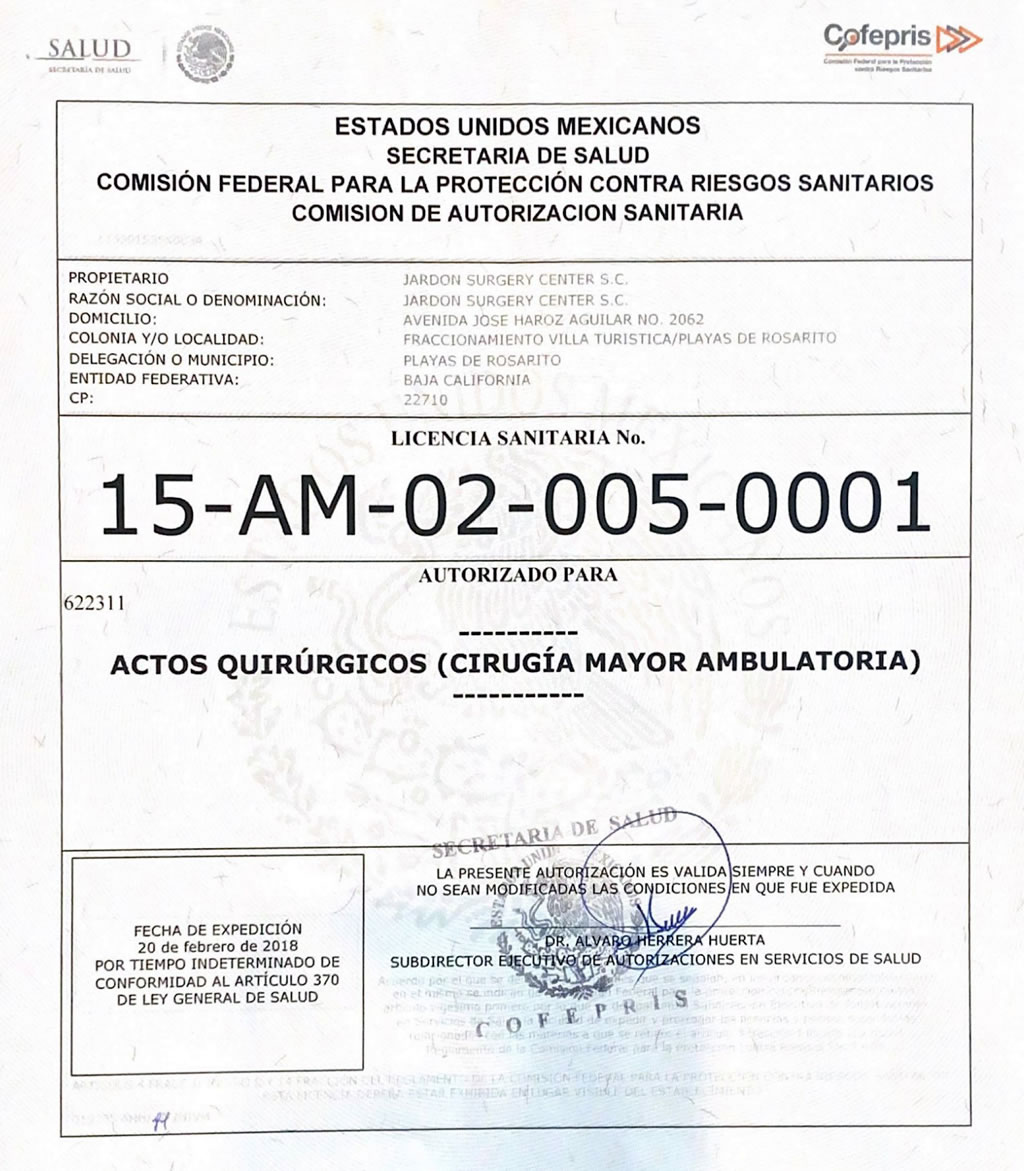
Dr. Ricardo Jardón
Post Graduate in Minimally Invasive Surgery
Post Graduate in Gastroendoscopy
High Specialty in:
- Gallbladder Surgery
- Esophageal Reflux Surgery
- Hernia Surgery
- Appendix surgery
Digestive Endoscopy
in Rosarito
Endoscopy and colonoscopy are very safe procedures to diagnose intestinal diseases (esophagus, stomach, duodenum, large intestine or colon). They consist of the introduction of a thin (9mm) flexible and long tube that has a camera at the tip through the mouth (endoscopy) or the anus (colonoscopy) to visualize the interior of the digestive tract.
In order to see inside, these high-tech equipment have a cold white light and air to distend (inflate the inside of the intestine to see) and a working channel through which forceps can be inserted to take samples, ligatures , to control variceal bleeding, clips to control internal bleeding.
The procedures do not hurt and are very safe, they are performed in an Endo-Colonoscopy room that is certified by COFEPRIS
The endoscopy units have oxygen, suction, a multi-parameter monitor to take care of their vital parameters at all times, an anesthesia machine, a surgical table (a special stretcher to lay the patient down) and state-of-the-art equipment where the endoscope or colonoscope (the tube that is introduced into the body through the natural orifices of the mouth or colon) project the image onto a high-resolution monitor where the certified specialist uses his knowledge to make a (large) macroscopic diagnosis of the appearance of the intestine).
In this same procedure, samples can be taken which are sent to another specialist for microscopic examination to complete the clinical diagnosis and start treatment.
Colonoscopic and endoscopic procedures must be performed in the presence of a certified anesthesiologist who is in charge of sedating the patient (the patient will have the sensation of being asleep and will not remember the endoscopic procedure).
Endoscopic and colonoscopic studies are outpatient procedures (the patient enters and leaves the endoscopic unit the same day).
Endoscopic procedures are performed by appointment, patients must present themselves completely fasting (no breakfast or water) accompanied by an adult relative. When a colonoscopy is performed, the patient must undergo a colon cleansing by ingesting a special medication one day before the procedure, so your appointment is imperative to resolve all doubts about it.
When is it necessary to do an endoscopy?
Endoscopy is indicated for patients who require immediate evaluation of symptoms due to various diseases.
These symptoms include:
- Very rapid feeling of fullness or fullness after eating
- Unexplained reflux or return of food.
- Pain or discomfort in the throat, chest or stomach or stomach (diaphragm) when consuming solid or liquid food, called 'dysphagia'.
- Burning or stabbing pain in the pit of the stomach
- Pain when swallowing or passing food from the mouth to the stomach
- History of stomach or colon cancer
- Persistent, brown or bloody vomit. (coffee pots).
- Diarrhea or constipation for more than 4 weeks
- Stool with blood or black.
- Unexplained weight loss.
- Medications for uncontrolled reflux and gastritis.
- Have a history of liver disease, such as cirrhosis, to evaluate options for prevention or treatment of esophageal or gastric varices.
Doctors perform this procedure in a hospital or outpatient center. Before the procedure, patients may receive sedatives or medications to help them stay relaxed and comfortable during the procedure.
You will be given a sedative through an IV needle in your arm.
In some cases, the procedure can be performed without sedation.
Patients may also receive a liquid throat wash or spray to numb the throat and prevent nausea during the procedure.
Health professionals will monitor vital signs and make the patient as comfortable as possible.
The patient will be asked to lie on their side on the exam table.
The doctor carefully guides the endoscope down the esophagus into the stomach and duodenum.
A small camera attached to the endoscope sends video images to a screen so you can closely examine the inner walls of the upper digestive system.
The endoscope pumps air into the stomach and duodenum so that the images can be seen more easily.
During a gastrointestinal endoscopy, doctors may:
- Take a small sample of tissue, cells, or fluid from the upper digestive tract to test
- Try to control bleeding (Hemostasis)
- Other operations such as esophageal dilation (when the esophagus is narrowed)
A gastrointestinal endoscopy usually takes 15 to 30 minutes. The endoscope does not interfere with breathing, and many people fall asleep during the procedure.
Recommendations before performing an endoscopy
Before performing the endoscopy procedure, it is necessary for the patient to follow the following recommendations:
Food: You must refrain from drinking water or eating any type of food during the six to eight hours prior to the test.
Refrain from consuming any red colored food for 6 hours before the endoscopy, as this allows you to see the intestine more clearly.
Attend the day of the procedure in the company of an adult relative.
Risks of performing an endoscopy
They are very rare and are discussed in detail at the scheduling appointment.
Cases in which immediate medical attention should be sought
If a patient experiences one or more of the following symptoms after a gastroscopy, they should seek medical attention immediately:
- Chest pain
- Difficulty breathing.
- Difficulty swallowing or sore throat worsens
- Vomiting, especially if it is bloody or looks like coffee grounds
- Increased abdominal pain
- Bloody or black, tar-colored stools
- Fever
Schedule an appointment today.
Early Diagnosis can be cured in case of cancer. We are ready to serve you
Endoscopy in Rosarito
Ave. José Haroz Aguilar #2062,
Fracc Villa Turística,
Playas de Rosarito, B.C., CP 22707.

Contact Phones:
(664) 368 8403
(664) 366 3896
(661) 612-1927
(619) 488-4138
(619) 308-7081
office hours
Domingo: Cerrado
Emergencias: 24 / 7 / 365










